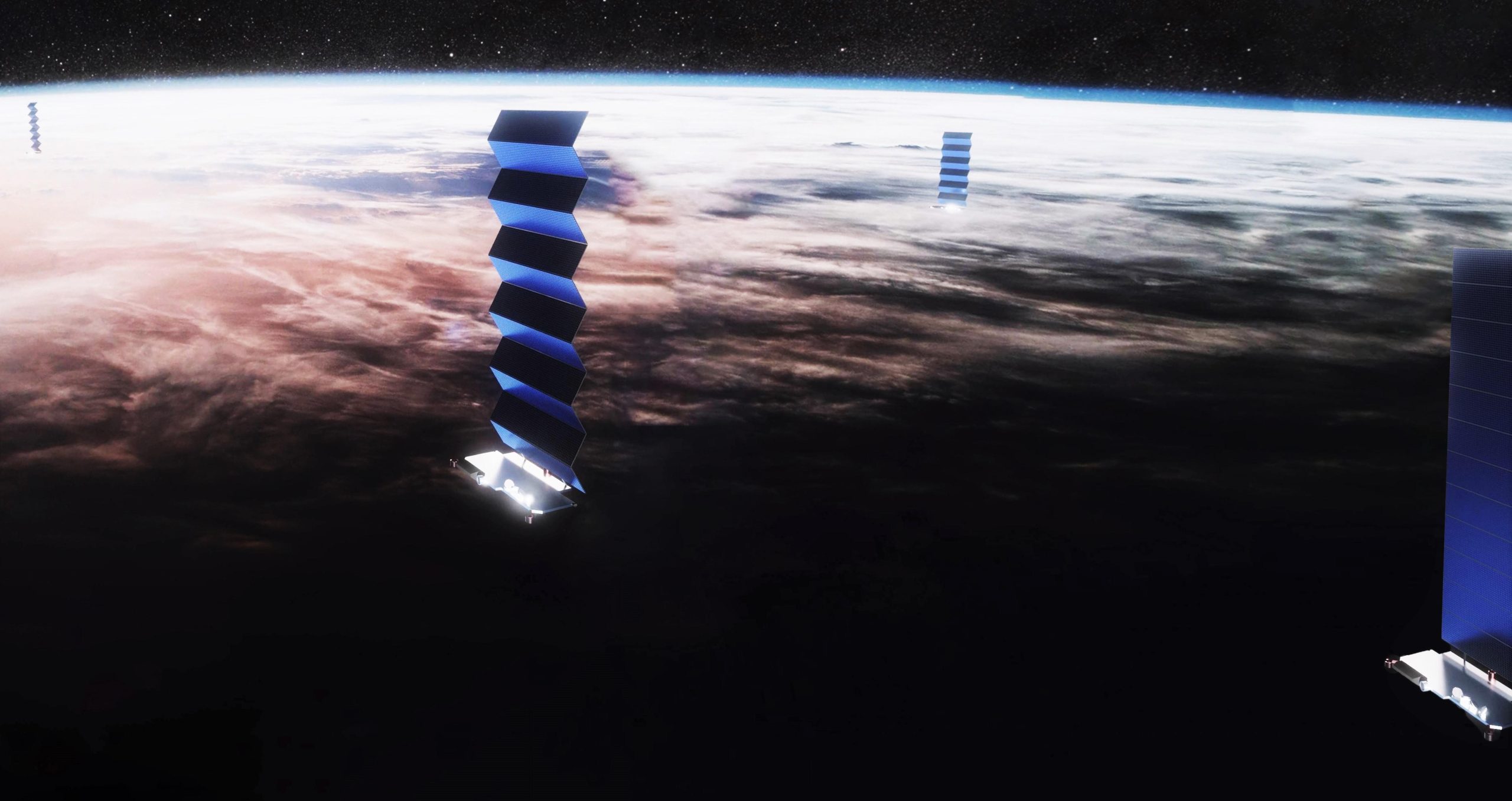
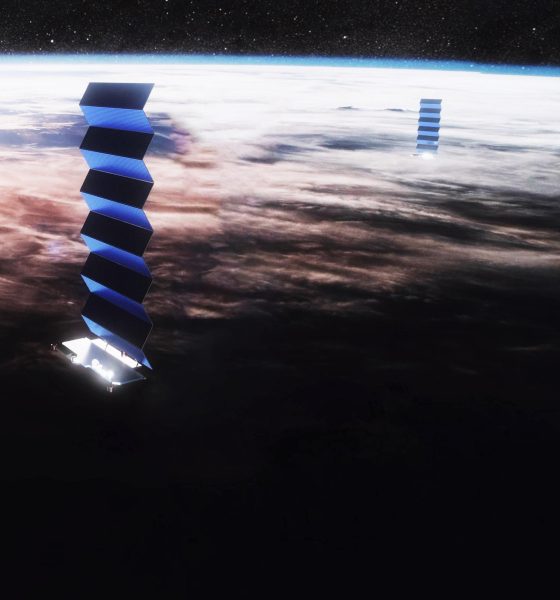
News
SpaceX’s Starlink satellite internet was tested by the US Air Force and the results are in
SpaceX President and Chief Operating Officer Gwynne Shotwell recently provided information about the company’s Starlink satellite internet constellation after a panel at the International Aeronautical Congress in Washington D.C. Shotwell spoke of a partnership with the U.S. military and just how far she believes Starlink is ahead of rival mega-constellation efforts.
While competitors are still developing very early prototypes and worrying about launch options, SpaceX has already launched 60 Starlink ‘v0.9’ satellite prototypes, 50 of which continue to successfully operate in low Earth orbit approximately half a year after launch. As part of a $29M contract awarded in late-2018, SpaceX is also working directly with the U.S. Air Force to test military applications of commercial space-based internet.
As previously reported by Teslarati, SpaceX was awarded a $29 million contract in December 2018 to collaborate with the U.S. Air Force Strategic Development Planning and Experimentation Office. Together, the organizations are testing potential military applications of Starlink satellite internet, as well as prospective constellations from other companies like Telesat.
From LEO to aircraft
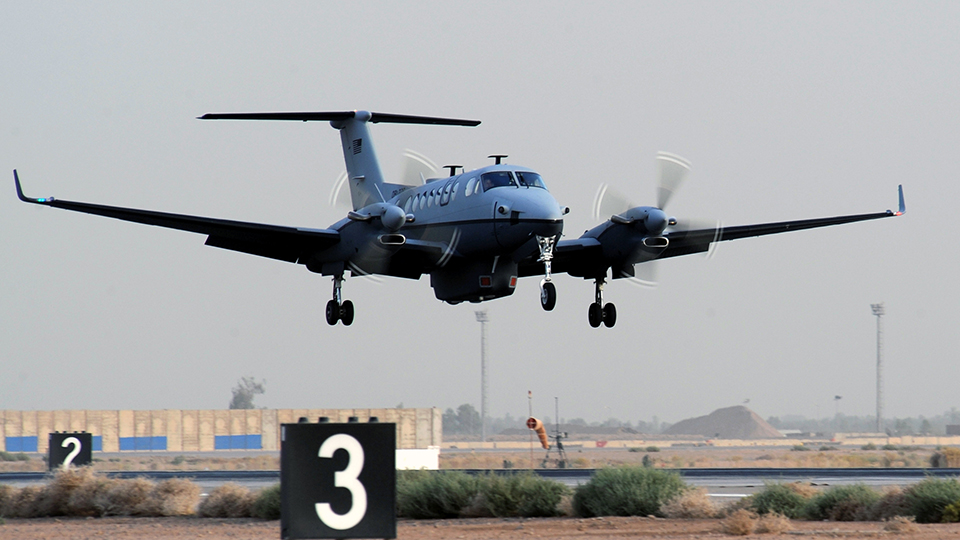
The technical viability and utility of beaming high speed, low-latency broadband internet directly into the cockpits of military aircraft is being tested under a program called Global Lightning. SpaceX has engaged the initiative and was awarded $29M to pursue development and testing, far more than any other contract recipient. In October 2019, SpaceX and the USAF began publicly discussing the latest results of that effort to test Starlink’s capabilities in the realm of in-flight connectivity. As reported by SpaceNews, SpaceX COO Gwynne Shotwell revealed that Starlink had successfully demonstrated a data link to the cockpit of a military aircraft with a bandwidth of 610 megabits per second (Mbps), equivalent to a gigabyte every ~13 seconds.
Following a previous speaking engagement on Oct. 15th at the Association of the U.S. Army’s annual conference, Shotwell and U.S. Army officials provided further insight regarding military applications of Starlink. Army officials spoke about the possibility of using Starlink satellite internet and other prospective constellations to support the military’s rapidly growing demand for high-speed communications.
During the panel with U.S. Army officials, Shotwell stated that “SpaceX is new to this forum and this service,” when addressing the possibilities that SpaceX could provide for the U.S. military. While working with the military is not a new concept to SpaceX, serving as a satellite communications provider would be unlike anything the company has yet attempted.
Up next, the USAF has plans to install Starlink terminals and test connectivity with an AC-130 gunship and a KC-135 tanker aircraft.
Falcon 9 to support frequent Starlink launches – customers and rocket reusability benefit
While Shotwell acknowledged the potential of a partnership with the US. military, she also noted that Starlink is first and foremost a commercial business meant to enhance the internet experience globally and nominally provide connectivity to anyone that wants it. She further noted that Starlink would remain an “additive to [SpaceX’s] business,” implying that it will not supersede SpaceX’s current launch service business.
Intriguingly, this is utterly counter to forecasts SpaceX has provided investors over the last several years, in which Starlink – if successful – would almost certainly come to produce one or two magnitudes more income than launch services ever could. Shotwell – speaking to a variety of US military (and Air Force) officials – may have wanted to avoid sending the message that SpaceX’s launch services business – crucial to the US military – might soon be absolutely dwarfed by Starlink revenue.
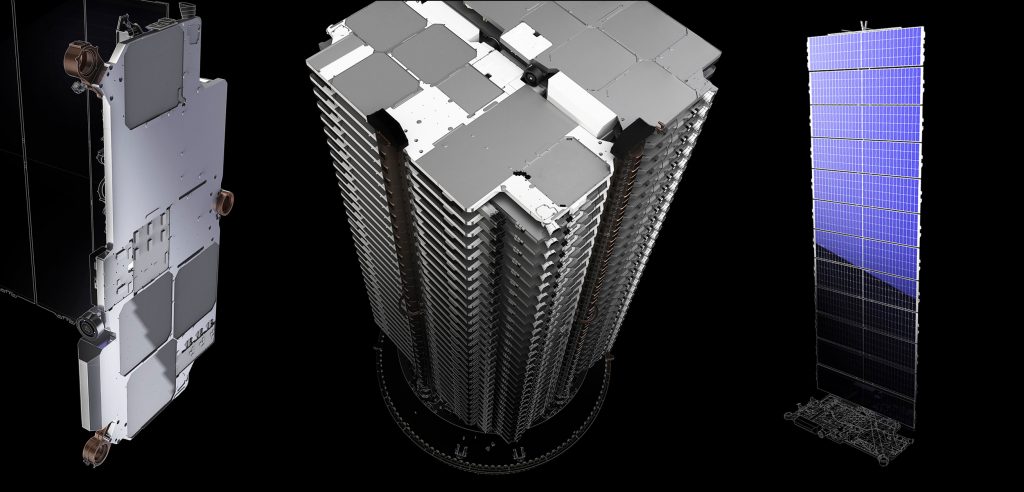
Previously hinted at by CEO Elon Musk, SpaceX hopes that revenue from Starlink will enable the company to independently fund the development and mass-production of its next-generation Starship launch vehicle, eventually enabling a permanent, large-scale human presence on Mars.
Currently, SpaceX’s Starlink plans involve several distinct phases, beginning with ~1500 satellites around 500km, another ~2900 around 1000 km, and an additional ~7500 in the 300-400 km range. Finally, SpaceX recently revealed even longer-term plans for Starlink that could involve launching up to 42,000 satellites, all in the name of expanding network coverage and bandwidth – pending, of course, consumer demand. To accomplish that feat, SpaceX will have to push rocket reusability to the absolute limits, beginning with Falcon 9 boosters and fairings and ultimately moving to Starship. According to Shotwell, “(SpaceX’s) intent is to use Starlink to push the capability of those boosters and see how many missions they can do.”
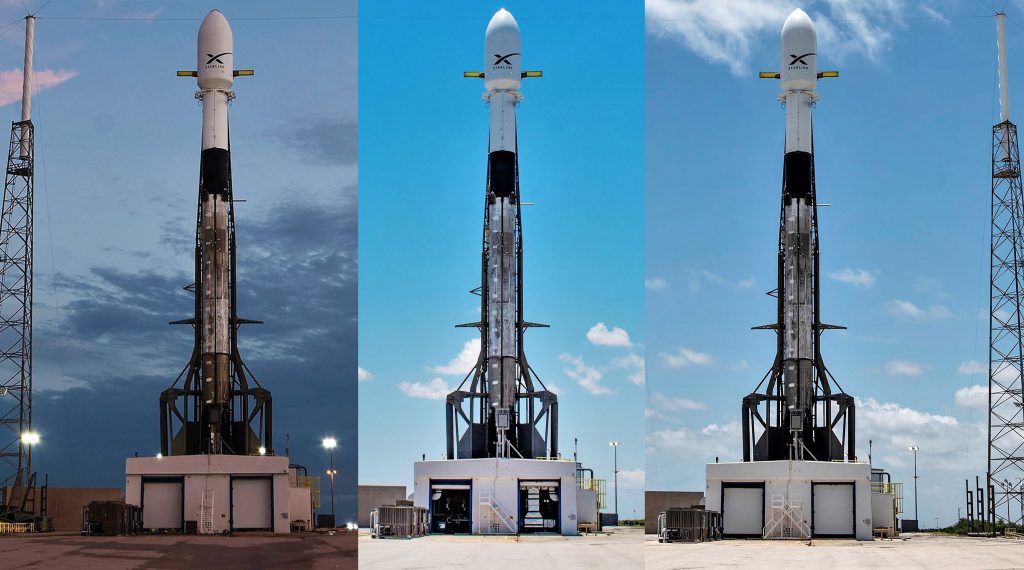
SpaceX’s next Starlink mission – also the company’s next mission and first launch in more than three months – will simultaneously attempt two new rocket reusability firsts, marking the first time that SpaceX has reused a Falcon payload fairing and the first time a single Falcon 9 booster has launched four times. Starlink-1 is scheduled to lift off no earlier than 9:55 am ET (14:55 UTC), November 11th.
Check out Teslarati’s Marketplace! We offer Tesla accessories, including for the Tesla Cybertruck and Tesla Model 3.

News
Tesla FSD fleet is nearing 7 billion total miles, including 2.5 billion city miles
As can be seen on Tesla’s official FSD webpage, vehicles equipped with the system have now navigated over 6.99 billion miles.

Tesla’s Full Self-Driving (Supervised) fleet is closing in on almost 7 billion total miles driven, as per data posted by the company on its official FSD webpage.
These figures hint at the massive scale of data fueling Tesla’s rapid FSD improvements, which have been quite notable as of late.
FSD mileage milestones
As can be seen on Tesla’s official FSD webpage, vehicles equipped with the system have now navigated over 6.99 billion miles. Tesla owner and avid FSD tester Whole Mars Catalog also shared a screenshot indicating that from the nearly 7 billion miles traveled by the FSD fleet, more than 2.5 billion miles were driven inside cities.
City miles are particularly valuable for complex urban scenarios like unprotected turns, pedestrian interactions, and traffic lights. This is also the difference-maker for FSD, as only complex solutions, such as Waymo’s self-driving taxis, operate similarly on inner-city streets. And even then, incidents such as the San Francisco blackouts have proven challenging for sensor-rich vehicles like Waymos.
Tesla’s data edge
Tesla has a number of advantages in the autonomous vehicle sector, one of which is the size of its fleet and the number of vehicles training FSD on real-world roads. Tesla’s nearly 7 billion FSD miles then allow the company to roll out updates that make its vehicles behave like they are being driven by experienced drivers, even if they are operating on their own.
So notable are Tesla’s improvements to FSD that NVIDIA Director of Robotics Jim Fan, after experiencing FSD v14, noted that the system is the first AI that passes what he described as a “Physical Turing Test.”
“Despite knowing exactly how robot learning works, I still find it magical watching the steering wheel turn by itself. First it feels surreal, next it becomes routine. Then, like the smartphone, taking it away actively hurts. This is how humanity gets rewired and glued to god-like technologies,” Fan wrote in a post on X.
News
Tesla starts showing how FSD will change lives in Europe
Local officials tested the system on narrow country roads and were impressed by FSD’s smooth, human-like driving, with some calling the service a game-changer for everyday life in areas that are far from urban centers.

Tesla has launched Europe’s first public shuttle service using Full Self-Driving (Supervised) in the rural Eifelkreis Bitburg-Prüm region of Germany, demonstrating how the technology can restore independence and mobility for people who struggle with limited transport options.
Local officials tested the system on narrow country roads and were impressed by FSD’s smooth, human-like driving, with some calling the service a game-changer for everyday life in areas that are far from urban centers.
Officials see real impact on rural residents
Arzfeld Mayor Johannes Kuhl and District Administrator Andreas Kruppert personally tested the Tesla shuttle service. This allowed them to see just how well FSD navigated winding lanes and rural roads confidently. Kruppert said, “Autonomous driving sounds like science fiction to many, but we simply see here that it works totally well in rural regions too.” Kuhl, for his part, also noted that FSD “feels like a very experienced driver.”
The pilot complements the area’s “Citizen Bus” program, which provides on-demand rides for elderly residents who can no longer drive themselves. Tesla Europe shared a video of a demonstration of the service, highlighting how FSD gives people their freedom back, even in places where public transport is not as prevalent.
What the Ministry for Economic Affairs and Transport says
Rhineland-Palatinate’s Minister Daniela Schmitt supported the project, praising the collaboration that made this “first of its kind in Europe” possible. As per the ministry, the rural rollout for the service shows FSD’s potential beyond major cities, and it delivers tangible benefits like grocery runs, doctor visits, and social connections for isolated residents.
“Reliable and flexible mobility is especially vital in rural areas. With the launch of a shuttle service using self-driving vehicles (FSD supervised) by Tesla in the Eifelkreis Bitburg-Prüm, an innovative pilot project is now getting underway that complements local community bus services. It is the first project of its kind in Europe.
“The result is a real gain for rural mobility: greater accessibility, more flexibility and tangible benefits for everyday life. A strong signal for innovation, cooperation and future-oriented mobility beyond urban centers,” the ministry wrote in a LinkedIn post.
News
Tesla China quietly posts Robotaxi-related job listing
Tesla China is currently seeking a Low Voltage Electrical Engineer to work on circuit board design for the company’s autonomous vehicles.

Tesla has posted a new job listing in Shanghai explicitly tied to its Robotaxi program, fueling speculation that the company is preparing to launch its dedicated autonomous ride-hailing service in China.
As noted in the listing, Tesla China is currently seeking a Low Voltage Electrical Engineer to work on circuit board design for the company’s autonomous vehicles.
Robotaxi-specific role
The listing, which was shared on social media platform X by industry watcher @tslaming, suggested that Tesla China is looking to fill the role urgently. The job listing itself specifically mentions that the person hired for the role will be working on the Low Voltage Hardware team, which would design the circuit boards that would serve as the nervous system of the Robotaxi.
Key tasks for the role, as indicated in the job listing, include collaboration with PCB layout, firmware, mechanical, program management, and validation teams, among other responsibilities. The role is based in Shanghai.
China Robotaxi launch
China represents a massive potential market for robotaxis, with its dense urban centers and supportive policies in select cities. Tesla has limited permission to roll out FSD in the country, though despite this, its vehicles have been hailed as among the best in the market when it comes to autonomous features. So far, at least, it appears that China supports Tesla’s FSD and Robotaxi rollout.
This was hinted at in November, when Tesla brought the Cybercab to the 8th China International Import Expo (CIIE) in Shanghai, marking the first time that the autonomous two-seater was brought to the Asia-Pacific region. The vehicle, despite not having a release date in China, received a significant amount of interest among the event’s attendees.








